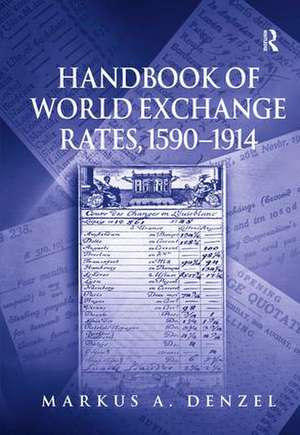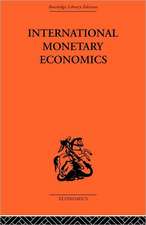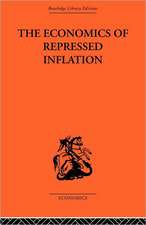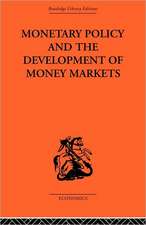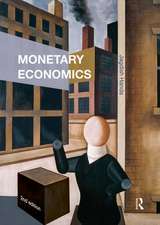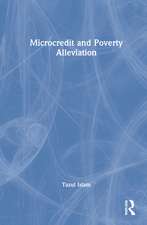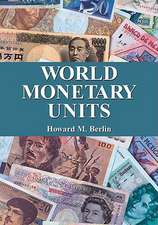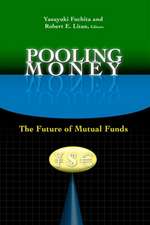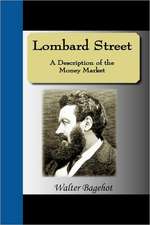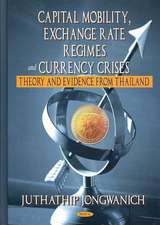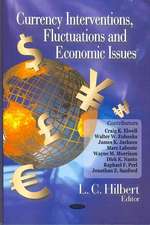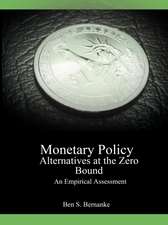Handbook of World Exchange Rates, 1590–1914
Autor Markus A Denzelen Limba Engleză Hardback – 28 sep 2010
Preț: 843.32 lei
Preț vechi: 1154.21 lei
-27% Nou
Puncte Express: 1265
Preț estimativ în valută:
161.37€ • 175.84$ • 135.98£
161.37€ • 175.84$ • 135.98£
Carte tipărită la comandă
Livrare economică 23 aprilie-07 mai
Preluare comenzi: 021 569.72.76
Specificații
ISBN-13: 9780754603566
ISBN-10: 0754603563
Pagini: 766
Dimensiuni: 169 x 244 x 52 mm
Greutate: 1.76 kg
Ediția:1
Editura: Taylor & Francis
Colecția Routledge
Locul publicării:Oxford, United Kingdom
ISBN-10: 0754603563
Pagini: 766
Dimensiuni: 169 x 244 x 52 mm
Greutate: 1.76 kg
Ediția:1
Editura: Taylor & Francis
Colecția Routledge
Locul publicării:Oxford, United Kingdom
Cuprins
Contents: Introduction; Sources and bibliography. Europe: England/Great Britain (1590-1914); Netherlands (1593-1914); Italy (1590-1914); Germany (1657-1914); Hapsburg monarchy (1754-1914); France (1760-1914); Spain (1820-1914); Switzerland (1842-1914); Denmark (1696-1914); Sweden (1700-1914); Russian Empire (1695-1914); Poland (1696-1812); Ottoman Empire (1760-1914). America: The British colonies in North America and the United States of America (1660-1914); Canada (1757-1914); Jamaica (1675-1914); Brazil (1808-1914); Argentina (1824-1914); Chile (1827-1914); Uruguay (1871-1914); Mexico (1886-1914). Asia: British India (1819-1914); China (1764-1914); Japan (1861-1914); Straits Settlements (1834-1914); Netherlands India (1818-1914); Mauritius (1825-1914); Indochinese Union (1888-1914); Persia (1809-1914). Australia/Oceania: Australia (1822-1914); New Zealand (1841-1914). Africa: Egypt (1869-1914); Cape Colony/South African Union (1811-1914); Index.
Notă biografică
Professor Dr Markus A. Denzel is professor for social and economic history at the University of Leipzig, Germany, and he is also a guest lecturer for economic history at the Free University of Bolzano, Italy.
Recenzii
’A clear, useful, authoritative explication of a set of complex developments concerning international exchange, the key to globalization of world trade and finance. It is a magnificent achievement. This work will easily and quickly become the standard source on the subject of the evolving international payment system over the last several centuries. It will be a "must buy" for libraries around the world.’ John J. McCusker, Trinity University, USA '... the Handbook is the result of a monumental undertaking with an overwhelmingly successful outcome. Scholars will be indebted to Denzel for years to come. The Handbook is admirable not only for its substance but also for the professionalism of its style and organization.' EH.Net '... a wonderful reference resource for anybody working on exchange rate and monetary history ... This Handbook is a product of many years of work that will bear fruit for many years into the future ...' Economic History Review ’The 150-page introduction is a veritable textbook in itself... this is a detailed and meticulously compiled history of world exchange rates... For academic libraries serving historians of finance, or students and scholars of economic history, this will become a standard source.’ Reference Reviews 'Every academic historian working in the three centuries before the First World War will need to buy this book, and by every I mean, every, as this is a necessary reference tool for political and cultural historians as well as economic and social historians. Political historians will need to know the fiscal power of their subjects compared with their contemporaries, art and architectural historians will need to be able to place the values and costs of the objects and buildings of their study in an international context, for art as much as politics knows no frontiers.' Peter Spufford, Bankhistoriches Archiv
Descriere
As a world economy emerged from the 16th-17th centuries onwards, a global cashless payment system arose. This had its base in Europe, first in Italy, then in the rising regions of the north-west, with Amsterdam and then London as the central financial market. The mutual quotation of exchange rates, which provide the data tabulated and analysed here, mark the integration into a global network of all areas with significant economic potential. The primary aim of this book is to provide a compact account of the exchange rates in all these financial markets, from the late 16th century up to the First World War. This makes possible an instant conversion between the major world currencies at nearly any date within that period, while the important introduction provides the explanation and context of developments. The present handbook therefore serves as an invaluable resource for those concerned with all aspects of commercial and financial history.
